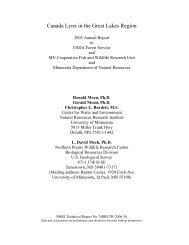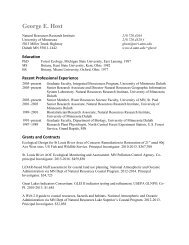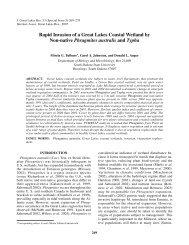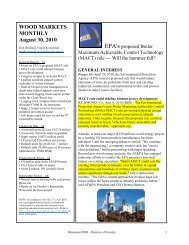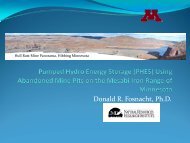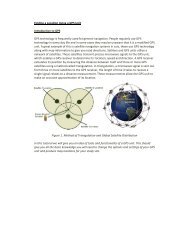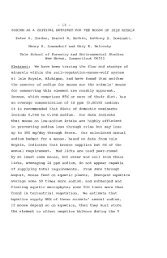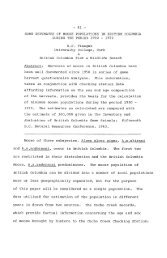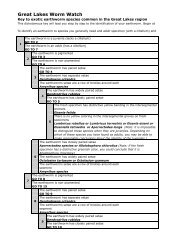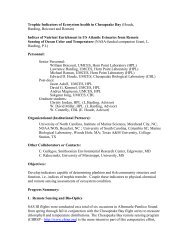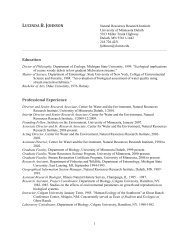Polycarbonate specifications
Polycarbonate specifications
Polycarbonate specifications
You also want an ePaper? Increase the reach of your titles
YUMPU automatically turns print PDFs into web optimized ePapers that Google loves.
<strong>Polycarbonate</strong>A true industrial thermoplastic, PC (polycarbonate) is widely used inautomotive, aerospace, medical and many other applications. PC offersaccuracy, durability and stability, creating strong parts that withstandfunctional testing. It also has superior mechanical properties to ABS and anumber of other thermoplastics. When combined with Stratasys FDM(Fused Deposition Modeling) systems, PC gives you Real Parts forproducing design verification prototypes and manufacturing end-use parts.Refer to the FDM System Material Availability spec sheet for systemavailability and color options.Mechanical Properties 1Test Method Imperial MetricTensile Strength, Type 1, 0.125ASTM D6387,600 psi52 MPaTensile Modulus, Type 1, 0.125ASTM D638290,000 psi2,000 MPaTensile Elongation, Type 1, 0.125ASTM D6383 %3 %Flexural StrengthASTM D79014,000 psi97 MPaFlexural ModulusASTM D790310,000 psi2,137 MPaIZOD Impact, notchedASTM D2561 ft-lb/in53.39 J/aIZOD Impact, un-notchedASTM D2565 ft-lb/in266.95 J/aThermal Properties Test Method Imperial MetricHeat Deflection Temperature @ 66 psiASTM D648280° F138° CHeat Deflection Temperature @ 264 psiASTM D648261° F127° CGlass Transition Temperature (Tg)DMA (SSYS)322° F161° CCoefficient of Thermal Expansion- - - - - - - - -3.8E-05 in/in/F- - - - -Melt Point- - - - - - - - -Not Applicable 2Not Applicable 2OtherTest MethodValueSpecific GravityASTM D7921.2Rockwell HardnessASTM D785R115Flame ClassificationUL 94V2, 1.1 mmDielectric Strength kV/mmIEC 6011215Dielectric Constant @ 60MhzIEC 602503.17Dielectric Constant @ 1MhzIEC 602502.96The information presented are typical values intended for reference and comparison purposes only. They should not be used for design <strong>specifications</strong> or quality controlpurposes. End-use material performance can be impacted (+/-) by, but not limited to, part design, end-use conditions, test conditions, etc. Actual values will vary withbuild conditions. Tested parts were built on Titan Ti, 0.010 inch slice (0.245mm).1 Build orientation is on side edge. 2 Do to amorphous nature, material does not display a melting point.
For more information about Stratasys systems and materials, contact your representative at +1 888.480.3548 or visit www.stratasys.comStratasys Inc.7665 Commerce WayEden Prairie, MN 55344-2020+1 888 480 3548 (US Toll Free)+1 952 937 3000 (Main)+1 952 937 0070 (Fax)www.stratasys.cominfo@stratasys.comStratasys GmbHWeismüllerstrasse 2760314 Frankfurt am MainGermany+49 69 420 9943 0 (Tel)+49 69 420 9943 33 (Fax)europe@stratasys.com©2007 Stratasys Inc. All rights reserved. Stratasys is a registered trademark and Real Parts, FDM, Prodigy Plus, FDM Vantage,FDM Titan and FDM Maxum,are trademarks of Stratasys Inc., registered in the United States and other countries. All othertrademarks are the property of their respective owners. Product <strong>specifications</strong> subject to change without notice.Printed in the USA. MS-PC 01/07



